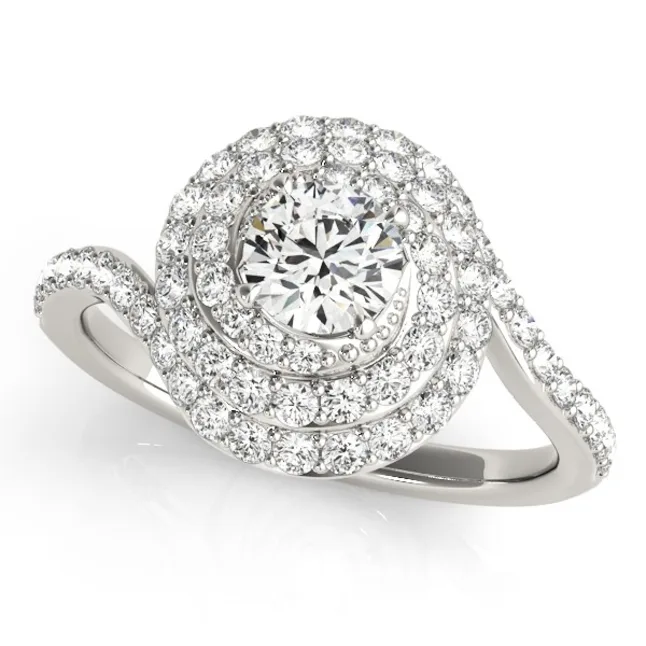Diamond Engagement Ring Buyer's Guide | Rare Carat
Buying an engagement ring can be daunting, intimidating, or even overwhelming, especially if you don’t know where to start. I totally get that… I used to be you! Luckily, I am here today to break down the most popular options and choices into a simple and easy diamond engagement ring buyer’s guide. We are going to talk about basic diamond quality (necessity), standard diamond shapes, and popular engagement ring designs. I promise by the end you will feel so much more comfortable in what you are looking for. Ready to talk diamonds?!
Diamond Quality
Diamonds are graded on the 4 C’s: cut, color, carat weight, clarity. Each of these categories (excluding carat weight) have a range to help define what an excellent diamond is. The combination of these factors is essential in how a diamond is priced… so it is important for you, as a buyer, to know a little about them.
Diamond Cut
A common misconception is that the cut of the stone is referring to its shape, but it’s not. It is actually indicating how the diamond was cut into what you see. As in, did the cutter reach the full potential when cutting the raw rough diamond into a finished one? The scale itself scores from Excellent to Poor. Weird things start to happen with diamonds when the cut is wrong. For example, if a round diamond is cut too shallow it will create a “fish-eye” effect where it noticeably looks like the circular outline of a fish-eye, around the middle of the table, looking back at you. This is just a reflection, but it definitely is not ideal and would receive a lower cut grade. For grading round diamonds, “they” have figured out the exact angles and proportions for the cut to maximize a stone’s potential, hence receiving an excellent cut grade (I wish I was half as smart as whoever “they” are). To sum it up, the cut is important because it really is responsible for allowing the highest brilliance and sparkle to be reflected back at you.
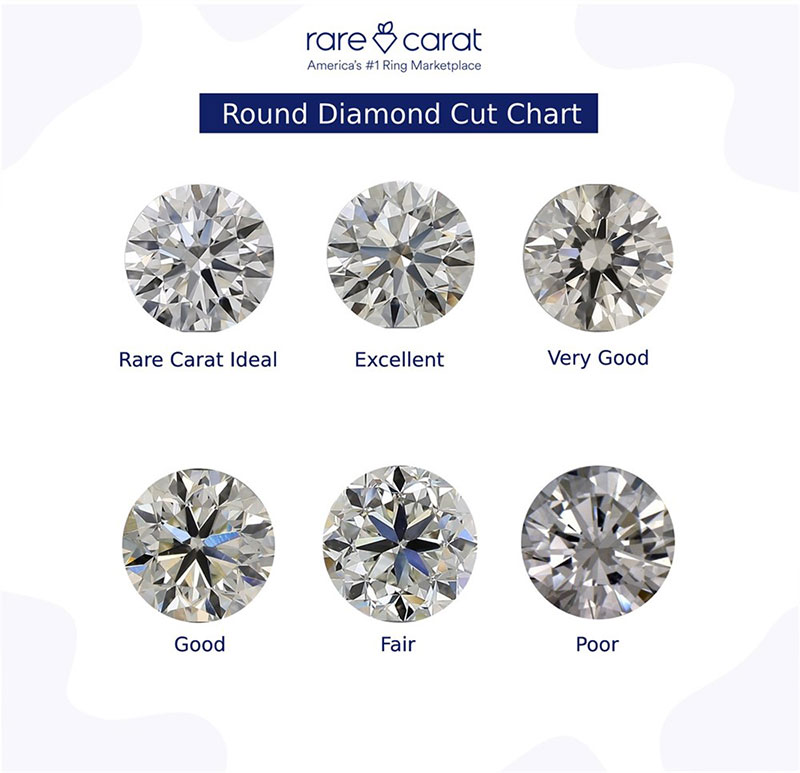
Diamond Color
Color is fun because this is where you can choose to sacrifice a little and you’ll never know the difference, or you can be amazing and go for a perfect colorless stone (which is instant bragging rights). Most diamonds do have some sort of slight yellow to brown tint in general, but the color scale ranges from D-Z; with D being colorless and Z being visibly yellowish. Interestingly, the Y-Z grade is only one step away from being saturated enough to be called a “fancy yellow” diamond. The world of fancy colored diamonds drastically increases in price because they are rarer than the standard “colorless” diamond. We start to notice color around K on the scale, which means anything between D-K would be ideal for a standard diamond engagement ring.
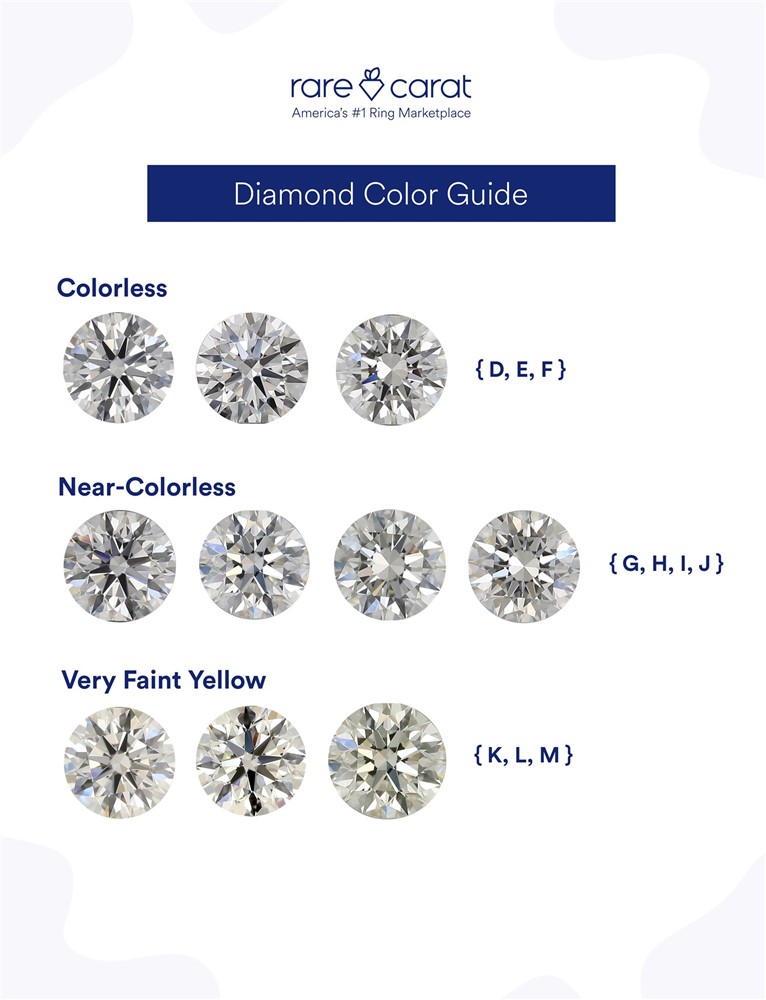
Diamond Carat Weight
When it comes to carat weight, all I can say is the bigger the better (yup, I said it). We love a big diamond, but we love a small diamond too. We are all equal opportunity diamond lovers here. I will offer this advice though; if you don’t care about having a 0.97ct. vs. 1.00ct., or 1.48ct. vs. 1.50ct., etc., the price will be noticeably more affordable for a diamond that looks almost exactly the same (it’s just logistics - double eye roll I know).
Diamond Clarity
Lastly, clarity is hugely important to us because it is literally what we see! Okay technically we see it all, but the ring definitely cannot recover from poor clarity. It is distracting at minimum, or in worst case - structurally compromising. Clarity consists of both the internal and external characteristics of the diamond. However, we really only care about the internal inclusions because those are what dictate the clarity grade for every diamond (see it’s true - what really matters is on the inside). The clarity scale is easier to understand as a visual, so it looks like this.
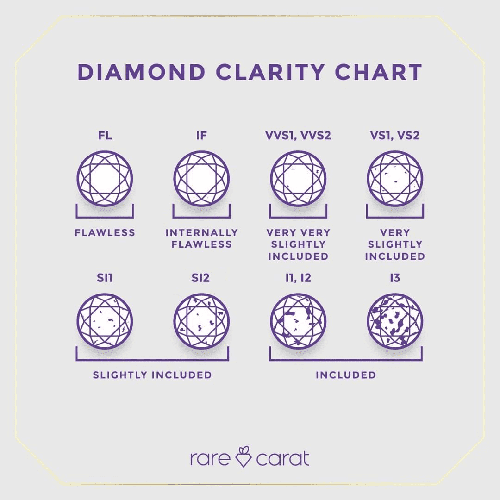
A flawless diamond grade is the absolute best that it gets (hoping in my next life to come back as a flawless diamond). Unfortunately, the majority of us will never see a flawless diamond because they are just that rare. An Internally flawless grade is basically just as good as flawless but will have a blemish (literally, the ONE time an external characteristic matters). So, since technically that can be fixed, it is graded as internally flawless. VVS1 and VVS2 will have minute inclusions only visible by a microscope, which means these are eye-clean stones. VS1 and VS2 have inclusions that are slightly larger, but still tiny and extremely difficult to see without magnification. SI1 and SI2 have eye visible inclusions depending on where they are located, and I1, I2, I3 have large, visible inclusions and might be structurally compromised. If you want your diamond to look eye-clean I would recommend anything with a V in the grade (VVS, VS).
There are some clean looking SI1 stones, which would be your best value for a diamond, but not all SI1s are created equal. If clarity isn’t your top priority, then this might be a good option for you. Just make sure you see the stone first and confirm there aren’t any visibly distracting inclusions (in a negative way cause sometimes inclusions are cute). Anything graded below an SI2 will be so heavily included that it just isn’t worth investing the money into the diamond, I promise.
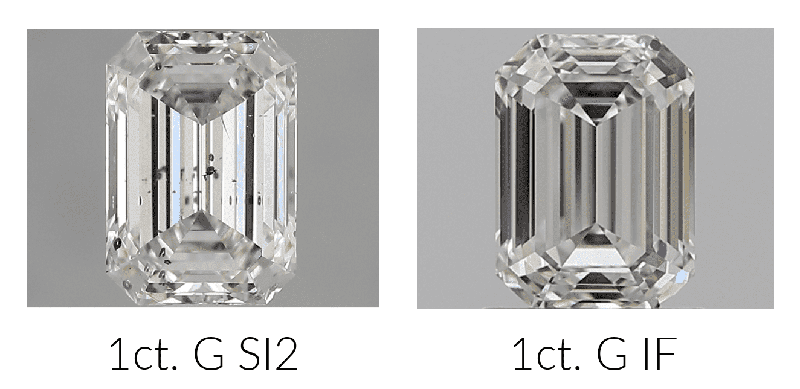
Standard Diamond Shapes
When it comes to shape, there are about 10 well known ones. Everything that is not a round diamond is considered a fancy shape (as if round diamonds aren’t fancy…??).
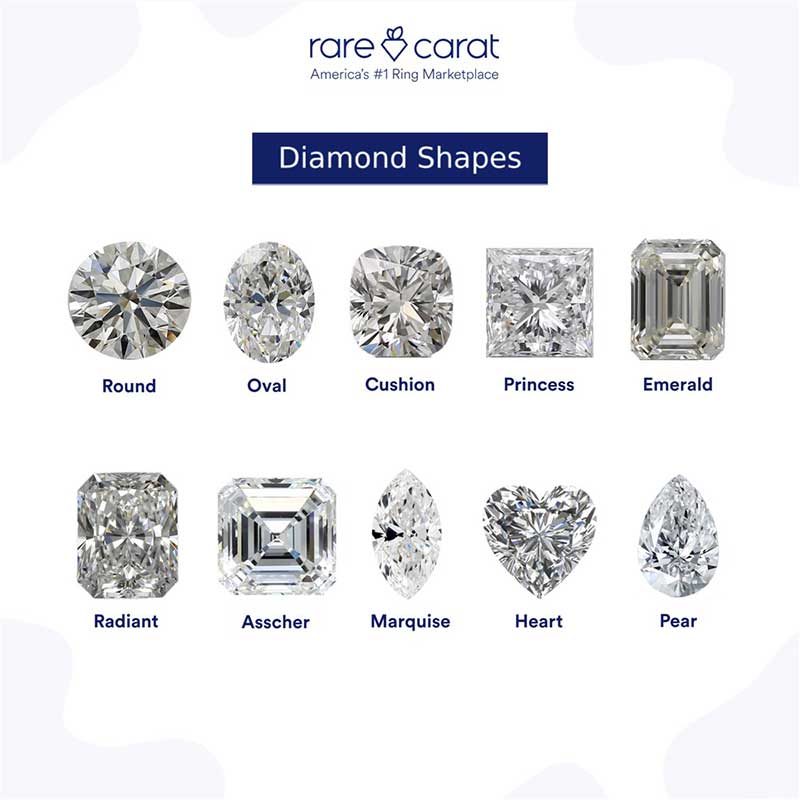
Along with personal preference, certain shapes offer distinct benefits. Round cuts are known as round brilliants for a reason - they have the most sparkle! They are also the priciest shape because they are the most popular and in highest demand. Emeralds, pears, ovals, and marquise tend to look larger because they are elongated and take up more of your finger’s surface space. Also, something else to consider, shapes with pointy corners (like the princess cut, or the pointy part at the bottom of a heart) are more vulnerable to damage. Remember, diamonds are resistant to scratching, not chipping!
Don’t stress the shape too much! Try to keep your daily lifestyle in mind (talking to you, crazy active, rock climbing, triathloning type people) but really it is mostly whatever is aesthetically pleasing for you. Moreover, different ring designs can look better with specific diamond shapes… so let’s move onto design!
Popular Engagement Ring Designs and Settings
The most challenging part (I think) of choosing a diamond engagement ring are all of the design options we have. For instance, options like single stone, multi-stone, halo, white, yellow, rose-gold, maybe perhaps diamond encrusted band…. plus, the setting for the diamond(s) itself, it can be endless. We could legit spend an entire day crafting different design combinations, but we are just discussing the basics for now (won’t hold you hostage… at least for today).
The Solitaire
A solitaire diamond ring is classy. It is a single diamond that looks simple, refined, and elegant on the finger. If this is the direction you want to go in, just make sure you find a beautiful stone since that is going to be the only focal point. This would be a great setting for a fancy shape because it would emphasize the fancy diamond’s unique form.
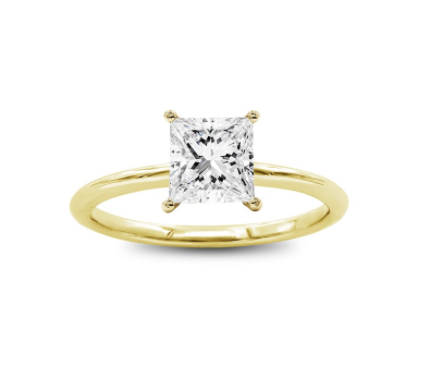
Multi-stone Rings
Doing a multi-stone ring allows a little bit of creativity, which I find exciting. I think the most common multi-stone would probably be the 3 stone round diamond ring with a larger center stone and a smaller diamond on each side. There are many variations of this, including using a combination of other gems or additional stones. For instance - a diamond center stone with two small blue sapphires on each side, or even a 5 stone diamond ring that sprawls the entire finger. Cluster rings, where smaller diamonds are literally grouped in a roundish cluster, are also a cool option if you want something less traditional.
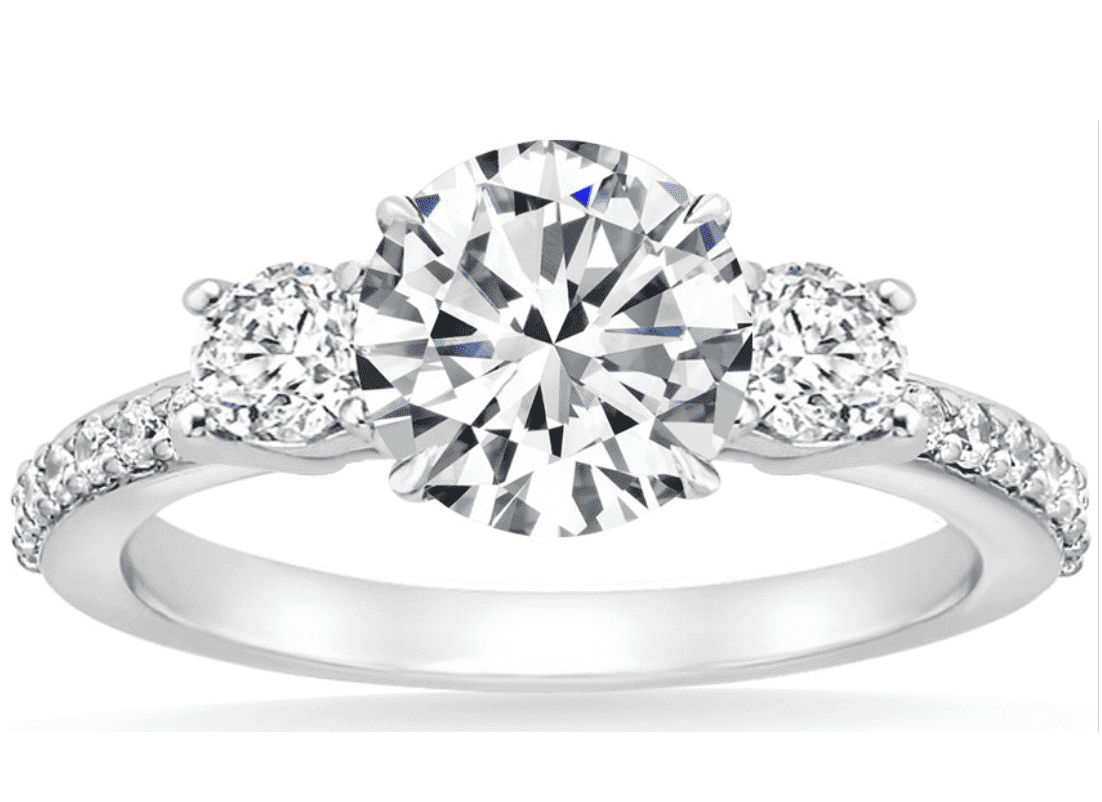
Prong Settings
Another aspect to consider in the design of the ring is what kind of setting (otherwise known as the head) you want, or in other words what actually holds the diamond in place. The most common setting, and the most familiar to you (probably), is the prong. It looks like a little metal claw gripping the diamond. This is beneficial because it supports a variety of shapes and sizes of diamonds while offering a classic look. The drawback of the prong is it can get snagged on things, like clothing. Also, it will slightly loosen over time, potentially endangering the diamond’s safety (it would suck so much to look down and realize your beloved diamond is gone). Really, as long as you have a jeweler check the prongs occasionally, it should totally be fine.
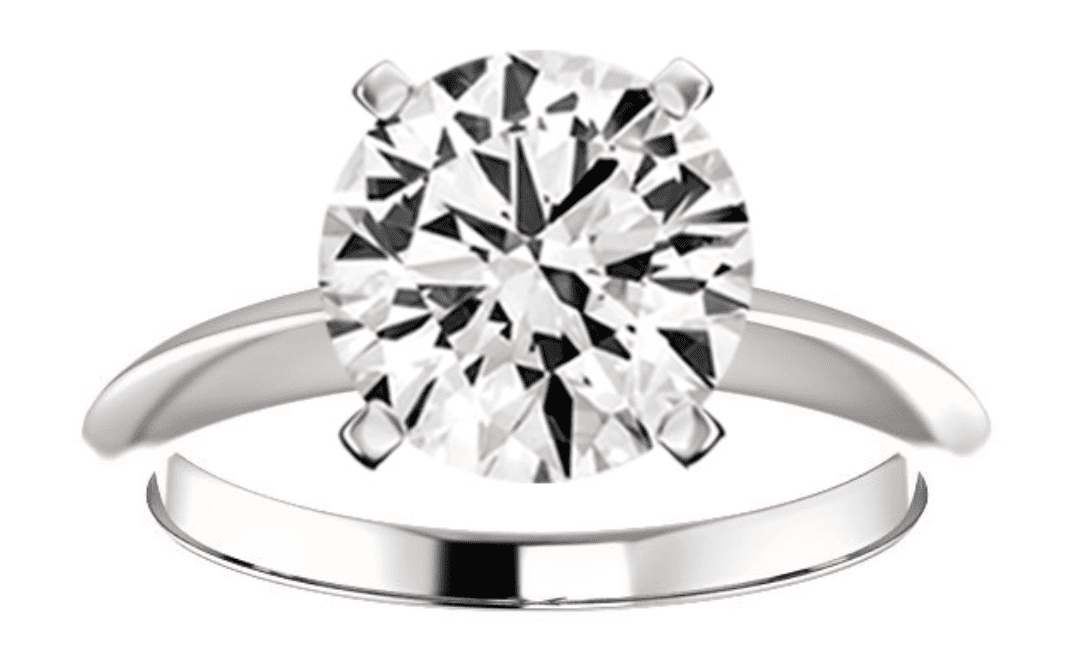
Halo Setting
Another highly recognizable setting is the halo. The halo ring design originally came about in the 1920s… but it had a cult following recently throughout the 2010s. This is where a single main diamond is slightly elevated and then entirely surrounded by smaller diamonds. The whole idea behind this is that it makes the diamond look much bigger than what it is. People who love the halo love it for this exact reason. The only problem might be that the smaller diamonds may become loose over time so just be vigilant.
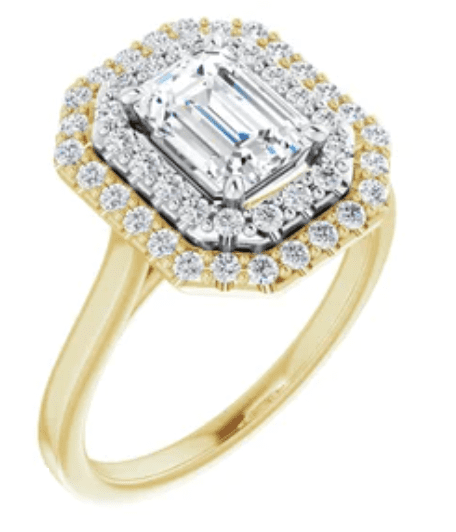
Bezel Setting
Additionally, the bezel setting is also super popular. This is more of a modern looking design where the diamond is completely surrounded and secured in metal. It is a good choice for active people because the diamond is mostly protected, and the setting won’t snag on things. Downsides are the stone might look slightly smaller since it is completely enclosed, and it probably won’t appear quite as bright as in a prong type setting.

Stacked Rings
Stacking rings is also trendy. Usually, the engagement ring will be joined by two bands on either side, essentially enclosing it in between. I mention it here because there are sets that can be purchased together or custom made so they all match and fit perfectly. This is another awesome opportunity to get creative with it or to incorporate sentimental details.
Metal Options
Speaking of bands, there are, of course, several options for the band that holds your beautifully selected diamond (or diamonds). The most common preferences are white gold, yellow gold, rose gold, and platinum. Because diamonds are reflective, colored metals will make diamonds appear warmer, which is a classic look (like yellow or rose gold). The white metals are advantageous for a clearer, more colorless shine. Remembering this super simple tip can help your diamond appear more or less yellowish, depending on your personal taste.

As you're exploring your options for buying a diamond or simply researching the topic, have you thought about lab-grown diamonds? Prior to making a decision, don't forget to check out our comprehensive Lab-Grown Diamond Buying Guide to gain insight into the crucial aspects to keep in mind.
Okay, so we have pretty much covered the basics - diamond quality, diamond shape, and ring design. Hopefully, I kept my promise, and you feel a little more confident in what you are looking for…or at least at a minimum you now have a strong starting point in mind. Truly, the most important thing to remember is to have fun with it! If you have found someone you love enough to give an engagement ring to, then the hard work is already done!
